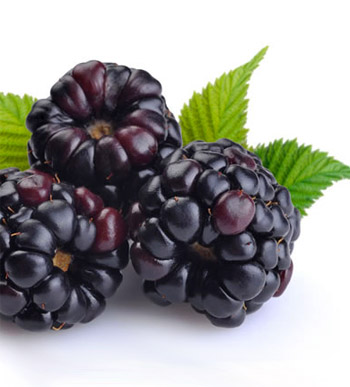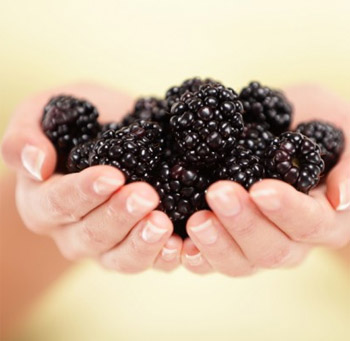|
|
|
 , ,
Font size |
Encyclopedia of Health Benefits of Berries

11. Dewberries:
These belong to the blackberry family and are sweeter than blackberries.
They are deep red in color when unripe, and dark purple when ripe. One striking
feature is that the male and female plants grow separately.
The dewberries (Rubus sect. Eubatus) are a group of species closely related to
the blackberries. They are small brambles with berries reminiscent of the
raspberry, but are usually purple to black instead of red. Dewberry, a trailing
shrub closely related to the blackberry. It is characterized by canes, or
prickly stems, that trail along the ground. The dewberry is native to North
America and grows in nearly every part of the United States.
The dewberry vine is slender and generally hugs the ground as it grows, shooting
out tendrils in several directions. The leaves are shiny and leathery and have
blunt-toothed edges.
The flowers are white. The fruit, which is edible, is dark reddish-black and is
larger than that of the common blackberry. Dewberries belong to the rose family,
Rosaceae. The American dewberry, the most common species, is Rubus flagellaris.
It may be difficult to distinguish dewberry and blackberry when looking at a
single leaf. However, the overall plant appearance and growth habits of these
two species are quite different. Dewberry has a low, vine-like growth habit and
will rarely reach greater than 2 feet in height. Blackberry has a very upright
growth pattern and will commonly reach 3 to 6 feet in height. Dewberry commonly
has slender thorns with red hairs on the stem while blackberry has hard, tough
thorns and no hairs. Additionally, the seeds in dewberry fruit are much larger
and tougher than those in blackberry.
 Dewberries are common throughout most of the Northern Hemisphere, sometimes
thought of as a nuisance weed, but the leaves can be used for a tea, and the
berries are sweet and edible. They can be eaten raw, or used to make cobbler or
jam. Dewberries are common throughout most of the Northern Hemisphere, sometimes
thought of as a nuisance weed, but the leaves can be used for a tea, and the
berries are sweet and edible. They can be eaten raw, or used to make cobbler or
jam.
Around March and April, the plants start to grow white flowers that develop into
small green berries. The tiny green berries grow red and then a deep purple-blue
as they ripen.
When the berries are ripe, they are tender and difficult to pick in any quantity
without squashing them. The plants do not have upright canes like some other
Rubus species, but have stems that trail along the ground, putting forth new
roots along the length of the stem. The stems are covered with fine spines or
stickers. The berries are sweet and, for many, are worth the scratches and
stains that come from picking them. In the winter the leaves often remain on the
stems, but may turn dark red.
The leaves are sometimes eaten by the larvae of some Lepidoptera species
including peach blossom moths. The European dewberry, Rubus caesius, grows more
upright like other brambles, but is frequently restricted to coastal
communities, especially sand dune systems. Its fruits are a deep, almost black,
purple and are coated with a thin layer or 'dew' of waxy droplets. Thus, they
appear sky-blue (caesius is Latin for pale blue). It is less sought after,
because its fruits are small and retain a markedly tart taste even when fully
ripe.
Next..
Dated 12 March 2013

|
|
|
|
|
|
|









